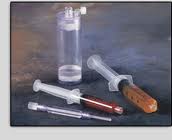Using elements of one’s own blood to heal wounds or to regenerate new tissues is a new and popular concept in plastic surgery. Whether they are applied to help heal defects in reconstructive plastic surgery or to aid in augmentation of deficient or aging tissues in cosmetic plastic surgery is a technologic development of the adage, ‘heal thyself’. One of the key elements in blood that is essential to these processes is the power-packed platelet. Chocked full of healing agents known as cytokines or growth factors, these attract and stimulate cells to an injured site which can produce the building blocks that form new tissue.
Extracting and isolating these platelets for injection and mixing with other components has become known as generating a platelet-rich plasma or PRP mixture. Such platelet-rich plasma mixtures is now used clinically in a wide variety of surgical applications. In plastic surgery, I currently use them to mix with fat injections or with grafting materials to enhance their take and survival. As popularity of this technology expands, a variety of devices to produce PRP have become available. How effective these devices are at isolating platelets and their growth factors is often not well characterized.

The PRP produced in this study contained a high number of concentrated platelets that remained inactivated during the separation process. This is exactly what one wants to see as any activation of the platelets as a result of the preparation process makes them virtually useless to implant. The cytokine levels were very significant in the PRP concentrate which suggests it would have a beneficial effect for tissue healing and regeneration. These numbers indicate that continued work with PRP is justified to discover what applications in plastic surgery in which it may be most effective.
Dr. Barry Eppley
Indianapolis, Indiana
*Instrumental in doing this study were Jennifer Woodall-May Ph.D. and Mike Leach from the Biomet Corporation.


